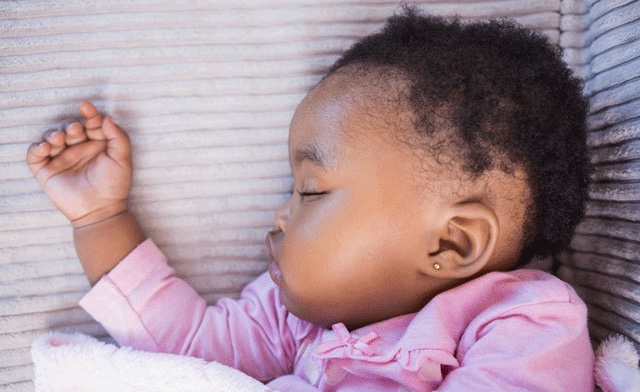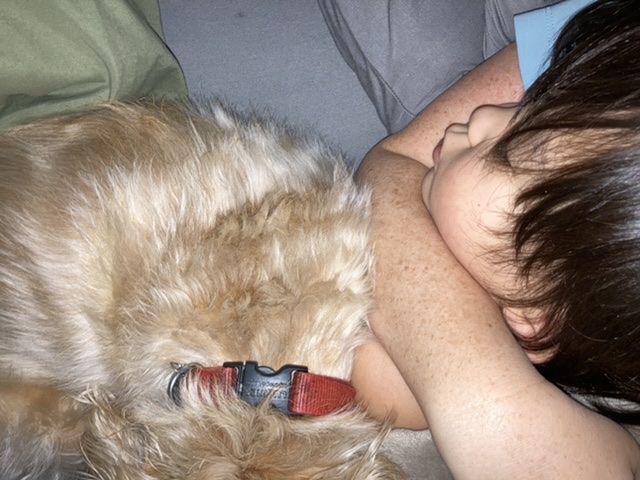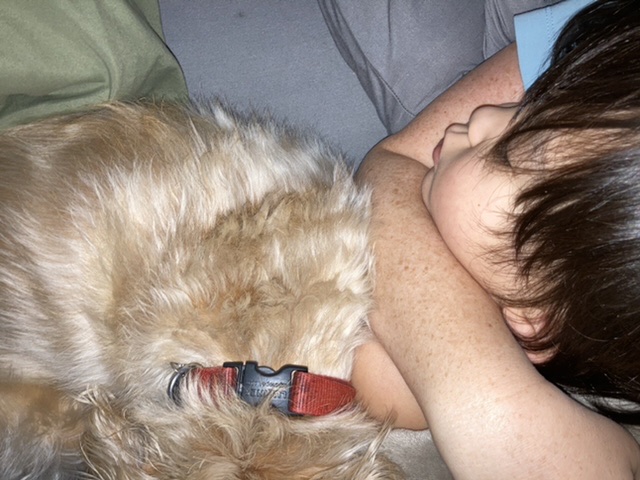You know why there’s nothing sweeter than a sleeping baby? Because it takes so much work to make sleep happen. Healthy, consistent sleep habits are key for getting your baby in a good groove for snoozing. To do it, set up a calming bedtime routine, buy a white noise machine to drown out distractions, and read what these two prominent sleep experts have to say in this baby sleep guide for year one.
Dr. Harvey Karp is a pediatrician, child development expert, co-founder of smart-tech and parenting solutions company Happiest Baby, which created the SNOO Smart Sleeper Bassinet, and author of The Happiest Baby Guide to Great Sleep. Renee Wasserman, P.T., M.P.H, is an infant & child sleep consultant and child behavior consultant, as well as the founder of the consulting practice SleepyHead Solutions, where she helps parents overcome sleep challenges with their babies and toddlers. Read on for their advice and our guide to baby sleep in the first year, from awake windows and naps to sleep regressions and the sleep tools that really work.

The good news: There are things we can do to help our babies sleep well. “Learning to sleep on your own is a skill just like learning to crawl or walk, and it takes lots of practice, consistency, and patience,” says Wasserman. “With the right plan looking at the sleep environment, routine, timing of feedings, schedule and approach to teach the skill of independent sleep, healthy sleep is achievable by all.”
Babies can differ when it comes to sleep patterns, but these guidelines will give you an idea of what to expect from naps and wake times, and how to create a healthy sleep routine for your baby. If you’re concerned about your baby’s sleep patterns, talk to your pediatrician.
Newborn Sleep Tips: Birth to 2 months
Total sleep a day:14-18 hours
Awake window between naps: 30 minutes to 1.5 hours
Naps: 45 minutes to 3 hours, several naps a day
Sleep help: swaddling, white noise, motion (smart bassinet, rocking, bouncing on a yoga ball), Dr. Karp’s the 5 S’s, described below
Newborns are usually up every 2-3 hours, even at night, which gradually extends to 3- to 5-hour stretches of nighttime sleep. To help newborns learn the difference between day and night, keep lights brighter by day, take sunny morning walks, and play upbeat music. In the evening, dim the lights and plan calmer activities, like baths, and stick to soft music and lullabies, as well as white noise.
Between birth and four months, Dr. Karp recommends the soothing technique he developed called the 5 S’s to turn on baby’s calming reflex and promote sleep. The 5 S’s are:
⚬ Swaddling—it decreases startling and re-creates the womb’s coziness.
⚬ Side/stomach position—you’ll calm a crying baby more quickly in these two positions, but, for safety, babies must be put on their back for sleep.
⚬ Shushing—making shushing noises with your mouth will soothe a fussy baby, and white noise re-creates the shushing sound that blood flow makes in the womb.
⚬ Swinging—to calm a crying child, support baby’s head and neck, and use fast, tiny swinging motions no more than one inch to each side (do this safely, no shaking).
⚬ Sucking—Whether they’re using a pacifier, their thumb, or your pinky finger, sucking soothes babies into sleep.
Related: 8 Dos and Don’ts of Baby Sleep

2-4 months
Total sleep a day: 13-14 hours
Awake window between naps: 1.5 to 2.5 hours
Naps: 30 minutes to 2 hours, 2-3 naps a day
Sleep help: white noise, blackout shades, Dr. Karp’s 5 S’s, introducing a sleep and feeding schedule, teaching your baby to self-soothe
Introduce a consistent daily schedule of feedings and sleep times. Picking up on your baby’s sleep cues (yawning or rubbing their eyes) will help you establish the schedule. And blackout shades can help babies sleep when the sun is shining. This is also a good time to introduce a sleep routine to signal to your child that it’s time for rest. Before naps, you can sing, read a book, and cuddle. The bedtime routine should be longer and can incorporate a bath, lullaby, baby massage, nursing or a bottle, soft music, white noise, and books.
A key part of creating good sleep habits is teaching babies to fall asleep independently, rather than always rocking, feeding or holding them until they fall asleep. It’s normal for children, and adults, to wake up between sleep cycles. So when babies wake, we make it easier for them to fall back asleep by putting babies to bed drowsy but awake.
“If they fall asleep while taking a bottle and then wake during the night and the bottle is gone, it often results in them crying for the bottle,” says Wasserman. “If they fall asleep on their own after being put in the crib drowsy but awake, when they wake during the night, they will be in the exact same position they were in when they fell asleep, making it easier for them to get right back to sleep.”
In fact, Dr. Karp recommends that if your baby falls asleep before being placed in their bed, wake them slightly after you lay them down, by changing their diaper, putting your cool hand on their head, or giving them a little tickle. Baby will open their eyes, moan, or move your hand before falling back to sleep.
“I know it sounds crazy to wake a sleeping baby,” says Dr. Karp. “But it helps infants learn how to self-soothe, which they can use in the middle of the night to put themselves back into slumber all on their own.”
At this age, babies are typically sleeping for 5- to 6-hour stretches, but watch out for that four-month sleep regression. Regressions usually last 2-4 weeks and typically coincide with exciting developmental and physical changes. According to Wasserman, the four-month regression generally happens as baby’s internal sleep rhythms start to settle. This can require changing your schedule so naps and nighttime sleep are better in sync with your child’s natural sleep rhythms.

4-8 months
Total sleep a day: 12-14 hours
Awake window between naps: 2-3 hours
Naps: 30 minutes to 2 hours, 2-3 naps
Sleep help: White noise, consistent naps, and a sleep schedule allowing your baby to self-soothe
Sleep stretches of 6-8 hours are possible at this age. But babies typically start teething around this time, so wake-ups can be due to discomfort. Try chilled teethers and give extra cuddles to soothe your little one back to sleep.
When your baby cries out from the crib, wait a moment before rushing to comfort them. Yes, it will feel like the longest seconds of your life. But here’s why it’s important: Your baby may be able to self-soothe to get back to sleep, thanks to all the work you’ve been doing to put them down drowsy but awake.
If you suspect hunger is waking your baby at night, make sure they’re feeding well before bedtime to fill them up. You can also introduce a dream feed, which means nursing or giving your half-asleep baby a bottle before you go to bed for the night.
At 8-9 months, prepare for another sleep regression. According to Wasserman, this regression is usually tied to babies dropping their third nap. She recommends moving bedtime a little earlier to keep your little one from becoming overtired as they get used to being awake longer before bed.
Related: 23 Swaddles & Baby Sleep Sacks We Love

9-12 months
Total sleep a day: 12-14 hours
Awake window between naps: 2.5-4 hours
Naps: 1-2 hours, 2-3 per day
Sleep help: White noise, consistent naps, and a sleep schedule allowing your baby to self-soothe
As babies approach the one-year mark, they may be sleeping up to 7-10 hours at a stretch, and it will feel as glorious for you as it sounds. But don’t get too comfortable because, with walking and other exciting baby milestones and developmental leaps on the horizon, sleep may get interrupted again.
Around 12 months, another sleep regression is likely. This one is usually linked to learning to walk and may result in your baby refusing to nap. Wasserman recommends not giving up on naps or switching to one nap just yet. Instead, hang tight and be consistent with two naps as your baby moves through this regression in a few weeks.
The happy ending to this wild year? Understanding your baby’s natural sleep rhythms, creating a soothing environment for rest, building an adaptable schedule of sleep and feedings, and teaching your baby to self-soothe and sleep independently have built a foundation of good sleep habits that will help your child (and you!) sleep well for years to come.
















